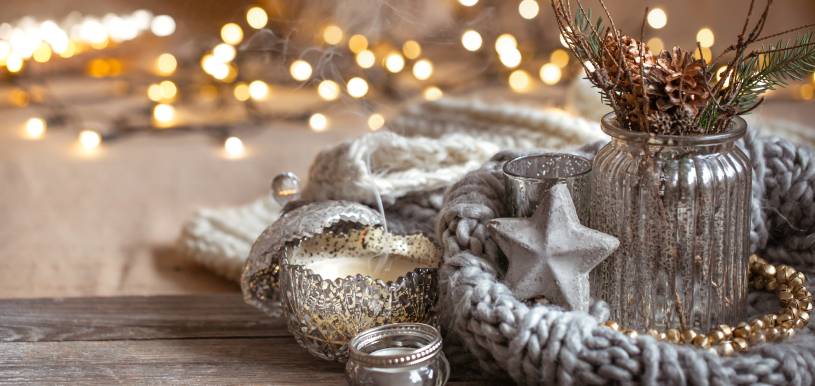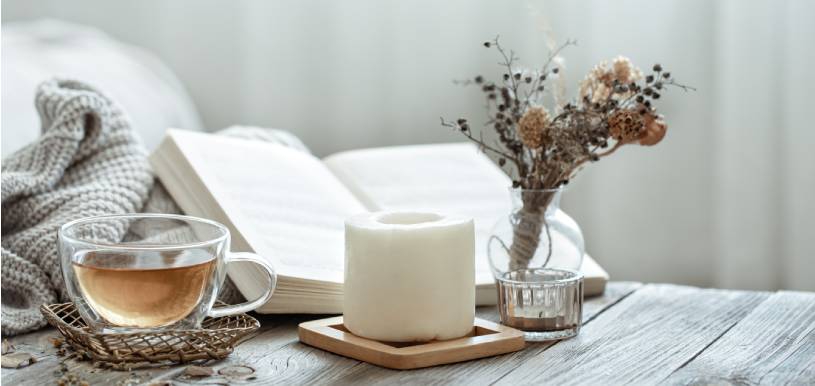How To Hygge Up Your Christmas

Image Source: pvproduction | Freepik
In a previous article, the Danish concept of hygge and its role in today’s lifestyle was looked at. The use of natural, environment-friendly items and a cozy room set up everyone can enjoy are two of the leading themes in the hygge design. All these habits are rooted in the main objective: to appreciate the simple joys in life.
Apart from the fact that hygge is essentially effective all year round, it has a significant place in Danish Christmas celebrations. As Meik Wiking would say, “it’s the most hyggelig time of the year.” In this season, hygge is exceptionally cherished everywhere in the country.
As we enter the holiday season, it is the perfect time to consider applying hygge to bring comfort and warmth into our homes and families. It is especially favorable for those who are still going through another lockdown period in the face of the new variant of COVID-19 and wish to have a festive, yet safe Christmas. Below are several ideas on how you can decorate your Christmas hygge style.
- Light up your candles
Remember the first rule: no candles, no hygge. Aside from advent candles, you can also either purchase scented or organic ones in various sizes. If you go for scented candles, pick soft fragrances for an utmost cozy atmosphere. Nevertheless, there are a lot of brands out there that provide holiday-themed candles you may consider as well, such as pine, cinnamon, and even candy cane.
Feel free to put the candles anywhere in the house; on the dining table, along the windowsill, around the fireplace, you name it. Not only does the light add to the homely atmosphere, but it will also elevate the aesthetic aspect of the room. You can choose to keep it lit the whole day, the Danes usually light up some advent candles for only an hour each day throughout December.
Most importantly, make sure you put them in a safe place. Avoid areas where the candles can fall easily, such as on top of stacked books (some people do it, but it is not entirely safe). If you have kids, best to keep the candles out of their playing area. You do not want to set fire to your house, right?
- Set up your own hyggekrog
Entering the festive season does not necessarily mean that you do not have time for yourself. After working hard the whole year, you deserve to enjoy this holiday by having a peaceful rest and doing hobbies you did not have the chance to do much, such as reading for entertainment purposes. Setting up a hyggekrog or a reading nook where you can cozy up with a warm blanket, soft cushions, and your favorite book in hand sounds like a perfect holiday plan.
Larger seating options, such as a sofa bed or a corner sofa, might be more applicable for houses with big spaces. For those who have limited living space, worry not! You can try using an armchair or even lay a simple rug then add a nice blanket and pillows. Best to have this set up next to the window so you can savor the view of either a winter wonderland or rain pouring outside your house.
- Decorate your home with nature
A hygge Christmas is dominated by neutral and earthy colors. White, beige, and sage are among the color options you may want to bear in mind. However, it does not necessarily mean that you are not allowed to use the primary Christmas colors. Combining these two palettes in your decor will help you achieve a harmonious look.
One interesting Danish Christmas tradition is cutting down a pine tree right from the forest and bringing it into the house so people can decorate it with candles. Talk about being deeply connected to nature; bringing in natural elements into the house will amplify your hygge experience. However, if it is too much of a task to have a freshly-cut Christmas tree, you may opt for smaller natural decorations that are easier to find, such as branches, leaves, acorns, and pines.
- Create your own DIY decorations
There are several ways to make a DIY project with natural elements. One option is to arrange the leaves into a garland which you can further decorate with Christmas lights, ball ornaments, ribbons, and pine cones. Another idea is to attach the branches on the wall then add hanging stars or Christmas bells underneath.
If you are feeling even more creative, crafting your own natural advent wreath will not only boost the overall look of the house but also sharpen your skills. You will need some straw, wires, and spruce. Essentially, you need to wrap and weave the straw and wires into several layers to make sure you have a strong base. Then, layer the spruce on top of the wreath and decorate it with greenery, pine cones, ribbons, and other Christmas decorations of your choice.
Additionally, figures of nisse (an elf or gnome), animals, and Father Christmas, as well as woven paper hearts made of glossy paper often adorn the houses in Denmark. These paper hearts are especially unique crafts to the Danes. They’re fashioned from two double-layered glossy paper cutouts, with the flaps of the two cutouts weaved together to form the heart shape.
Aside from the paper cutouts, glossy paper is often used to wrap Christmas gifts. Exchanging presents has indeed been an innate tradition of Christmas as a form of shared happiness. However, most of the regular types of paper used to wrap gifts are not good for the environment because they are rarely recyclable. What can we do to avoid this?
- Use eco-friendly gift wraps
In spite of the fact that people still widely use conventional ink-printed gift wraps, some of which are made of foil or plastic, most recyclers consider them difficult to process. It has become a problem because recyclers usually need additional chemicals to get rid of the ink when recycling wrapping paper. Taking this into account, there are some sustainable alternatives you can consider utilizing.
You may be familiar with kraft paper, which is a brown paper used to wrap packages, shopping bags, and lunch sacks. Despite its plain look, kraft paper is recyclable so you do not have to worry about polluting the earth during this festive season. Besides, you can decorate kraft paper with dried flowers and ribbons to make your Christmas gift look elegant and pretty.
Another recyclable and biodegradable gift wrap is newsprint. Using old newspapers makes the gift look vintage–which is in line with the spirit of hygge as it favors the nostalgic value of vintage items. Even so, newsprint with ink usually takes longer to biodegrade. Otherwise, you may opt to use repurposed gift wrap, such as old magazines or nice packaging you have from buying certain products.
Nonetheless, the easiest and probably the quickest packaging you can find in a gift bag. You can choose between those made of paper or fabric, such as a tote bag. It is convenient and reusable; recipients of the gifts can reuse it for when they shop or gift another person in the future.
As the main purpose of hygge is to create a joyful experience through simplicity, you can still pass on the festive spirit of Christmas while still being considerate to the surroundings by prioritizing a homely atmosphere and the use of eco-friendly materials. In the age of heightened consumerism where people prefer fancy things that often harm the environment, hygge emphasizes going back to nature which is one foundation for the existing concept of modern lifestyle. Hopefully, this ignites new and interesting ideas that you can try with your loved ones at home this holiday season.
And with that, have a merry hygge Christmas!


